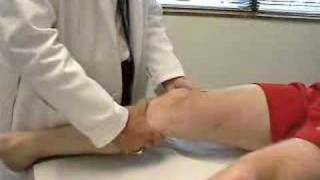Spasmodic torticollis has variably been described as a psychogenic disorder, a fragment of dystonia musculorum deformans, a compensatory postural defect in persons with congenital ocular muscle imbalance or defects of the cervical spine or musculature. In some instances it has occurred as part of a wide spectrum of extrapyramidal disorders following encephalitis lethargica. There is no information at present regarding either its pathophysiology or pathology.
The restriction of dyskinetic movements to neck muscles so that abnormal postures of the head result is the distinguishing characteristic of this symptom complex. Involuntary activity involves the sternocleidomastoids, trapezius, and scalene muscles in sustained contractions that result in slow, twisting, turning movements of the head (torticollis) or less often forward flexion (anterocollis) or forceful extension (retrocollis). In most instances there is bilateral involvement, and the resultant postural deformity is maintained for varying lengths of time.
The muscles of the neck appear under tension, and the continual muscular activity may lead to some degree of hypertrophy, especially evident in the sternocleidomastoid. Similar activity may spread to facial and brachial musculature. The amount of active motion or static postural deformity is extremely variable.
Being A Physician,You Must know The Stages of Spasmodic Torticollis Disorders
The disorder has been encountered at all ages, but most frequently makes its appearance during the third to sixth decades of life. The course is extremely variable, being, transitory and remitting after a few months in some patients and relentlessly progressive and leading to incapacity in others. Some cases reach a static phase in which movements cease or are minimal, and a minor postural deformity of the head persists.
The evaluation of this condition includes a search for ocular and vertebral signs, major psychiatric disturbances, and other neurological conditions with which it may be associated. Definable conditions account for only a small percentage of cases. In most, no known cause is uncovered.
Spasmodic Torticollis Treatment
There is no specific therapy for torticollis except when an underlying correctable disease process is found. Many measures have been recommended to ameliorate the symptoms. In mild cases or in the initial stages, a combination of drugs previously discussed under the treatment of parkinsonism has proved useful. Symptoms may be reduced to a tolerable degree, and it .’an be hoped that spontaneous -remission will intervene. In those more severely affected a variety of. surgical measures have been attempted with inconsistent results.
Denervation of the affected muscles by section of the anterior cervical roots and/or the spinal accessory nerve has been utilized. Although the movements decrease on the operated side, they frequently recur in the contralateral group of muscles. Bilateral procedures may result in extensive disability. Recently thalamotomy has been performed with encouraging results. One is hesitant, however, to recommend a procedure of this magnitude except in extreme situations.
